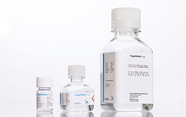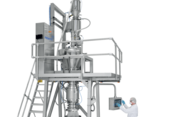The Multifaceted Future of Pharma – Chapter 8: Clinical Development

From bottlenecks and barriers to regulations and resources, there is much that has improved in the clinical development sector over the past ten years, but the next ten will require further progress.
We asked: “What one thing could dramatically improve the pharma industry as we know it?”
Genetic Support for Advanced Analytics – with Jacob Rubens, Origination Partner, Flagship Pioneering; and Co-Founder and CEO, Quotient Therapeutics
“A shift that could significantly improve the pharma industry is the increased integration of genetic support into drug development. Evidence shows that drugs with strong genetic backing exhibit nearly a threefold higher probability of success in clinical trials compared to those without such support. This notable increase in success rates can be attributed to the better alignment between drug mechanisms and the genetic factors that influence disease progression and patient response.
“Advances in both imaging and sequencing techniques have profoundly enhanced our ability to understand genetic variation at the cellular level. Innovations in high-resolution microscopy methods allow for the detailed visualization of single cells within somatic tissues, enabling isolation of single cells for sequencing to identify genetic differences in cells with different phenotypes. Coupled with advancements in next-generation sequencing technologies, the industry has dramatically increased the speed, resolution, and accuracy of genetic analysis, enabling comprehensive mapping of somatic genomic diversity at the level of single cells from patients instead of the limited germline diversity from an individual patient that the field has been limited to for so long.
“The integration of advanced imaging and sequencing techniques provides a powerful toolkit for dissecting the complexity of genetic diversity, offering insights into how somatic genetic variations influence cellular processes and contribute to various diseases. This synergy is already paving the way for more precise and personalized approaches to understanding and treating genetic conditions.”

Clearer Guidance and Better Resources – with Pam James, Vice President, Business Operations, Vector Laboratories
“A number of companies, particularly smaller biotechs, struggle to understand and make decisions around GMP requirements for key components versus active pharmaceutical ingredients (APIs). The confusion generally begins throughout the development process when drawing the line on what constitutes an API or a critical component and how to best approach GMP compliance – especially for manufacturing complex modalities like antibody-drug conjugates. Having clearer, more straightforward guidance on this distinction would be immensely valuable in helping smaller companies navigate the process in a costly, timely, and resource-efficient manner.
“There are many variables at play, and a clearer picture can help businesses make strategic decisions that are best for their company’s needs in the short- and long-term. Small biotechs may not have the same regulatory resources as biopharma to provide guidance on the matter, particularly for early development work, but these choices have major cost implications that can impact a company’s trajectory. Knowing exactly what components need to be manufactured in compliance with GMP and, importantly, when in the drug development process that needs to happen, is critical information that can help a small company make educated choices in light of their specific situation.
“Weighing the upfront costs associated with a GMP manufacturer during early-stage development against the time and resources needed to transfer to GMP later on can be difficult without a clear understanding of the guidelines for APIs versus critical components. Clearer FDA guidance on this topic, along with readily available support from expert suppliers to identify suitable solutions, could make a massive difference in facilitating efficient and successful drug development for companies of all sizes.”



















